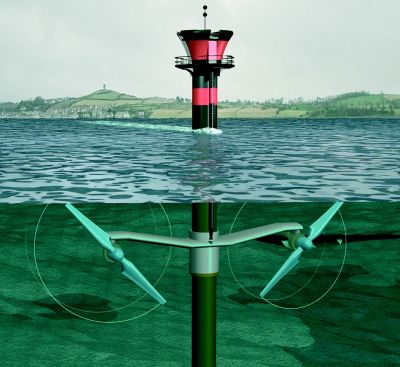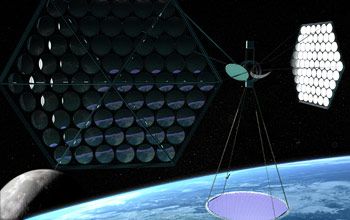NationOfChange March 21 2014
With the potential of limited resources found with fossil fuels, the focus has shifted toward finding alternative energy sources that are renewable and help keep the earth young and healthy. Here are some of the top energy sources that are already here or are being developed.
Tidal Energy
 With a design that’s similar to wind turbines, tidal energy is produced by propellers located under swiftly moving dense water. This source of energy is ideal since tides are more predictable than wind or solar power. Additionally, the technology is a lot older. Tide mills have been used since the Roman Empire.
With a design that’s similar to wind turbines, tidal energy is produced by propellers located under swiftly moving dense water. This source of energy is ideal since tides are more predictable than wind or solar power. Additionally, the technology is a lot older. Tide mills have been used since the Roman Empire.
Tidal energy has many advantages. Tidal turbines are located under the ocean, so people can’t complain about noise or that they’re ugly, as many do with wind turbines. Tidal turbines are also much smaller than wind turbines because water is about 830 times denser than air. Plus, efficiency is at 80 percent, which is higher than other forms of energy including coal, wind, and sun.
Solar Power
Solar power is one of the most common sources of renewable energy. The sun is captured using photovoltaic cells (also called solar panels) and places them in locations that can easily capture sunlight, such as roof tops. According to the U.S. Energy Information Administration, if 4 percent of the world’s deserts were covered with photovoltaic cells, it would produce as much energy as is needed by the entire world.
Space-Based Solar Power
 This is another form of solar power, but rather than collecting it from the earth’s surface, it’s collected in space. Conceived first by Isaac Asimov in 1941 in his story “Reason,” the idea was patented in 1973 by Peter Glaser. The idea has been visited again and again as technology has improved.
This is another form of solar power, but rather than collecting it from the earth’s surface, it’s collected in space. Conceived first by Isaac Asimov in 1941 in his story “Reason,” the idea was patented in 1973 by Peter Glaser. The idea has been visited again and again as technology has improved.
There are a few advantages of using space-based solar power. For one, there’s no worry about the day and night cycles or about cloud cover preventing panels from gathering the sun. Because there isn’t any air in space, the surface of the panels can receive more intense sunlight making it possible to collect 144 percent of the maximum that can be attained on the planet’s surface.
Wind
Different forms of wind energy have been used for more than two millennia with the use of windmills. Modern wind turbines are more efficient with three blades that reach speeds of up to 200 mph. Wind energy is being used more and more. In 1997, it accounted for only 0.1 percent of the world’s energy. As of 2010, that energy increased to 2.5 percent.
Though many have complained about the noise in the past, modern wind turbines produce very little sound; in fact, it’s hard to hear it over the wind itself. Average costs for wind are 4 to 6 cents per kilowatt hour. If you’re wondering about the costs of energy in your area, head to energysavings.com.
Geothermal Power
Geothermal energy comes from the earth through a natural process. This type of green energy can be used on a small or large scale by building a geothermal power plant. Geothermal power is cost effective at about 3.5 cents per kilowatt hour, and is environmentally friendly. The largest group of geothermal power plants is located on a geothermal field in California called The Geysers.
Hydroelectricity
With hydroelectricity accounting for 20 percent of the world’s electricity, it’s one of the most commonly used forms of renewable energy. In fact, there are countries where a majority of the country’s energy is from hydroelectricity, including Canada, Venezuela, Switzerland, and Brazil. The largest hydroelectricity plant is found on the Three Gorges Dam in China. In the U.S. alone has 2,400 dams that are used for hydropower.
It used to be that the cost of some alternative energy, especially solar energy and space-based solar power, were too expensive for them to be viable energy options. As technology advances, however, these sources that were once thought of as science fiction have become not only viable but valid options. We’re likely to see them used more and more as technology advances.
